Art Fairs
Magnus Renfrew on How the New Taipei Dangdai Fair Will Unlock Asia’s Most Underrated Art Market
The Hong Kong art-market impresario spoke to Andrew Goldstein about his vision for his new art fair in Taiwan's capital.
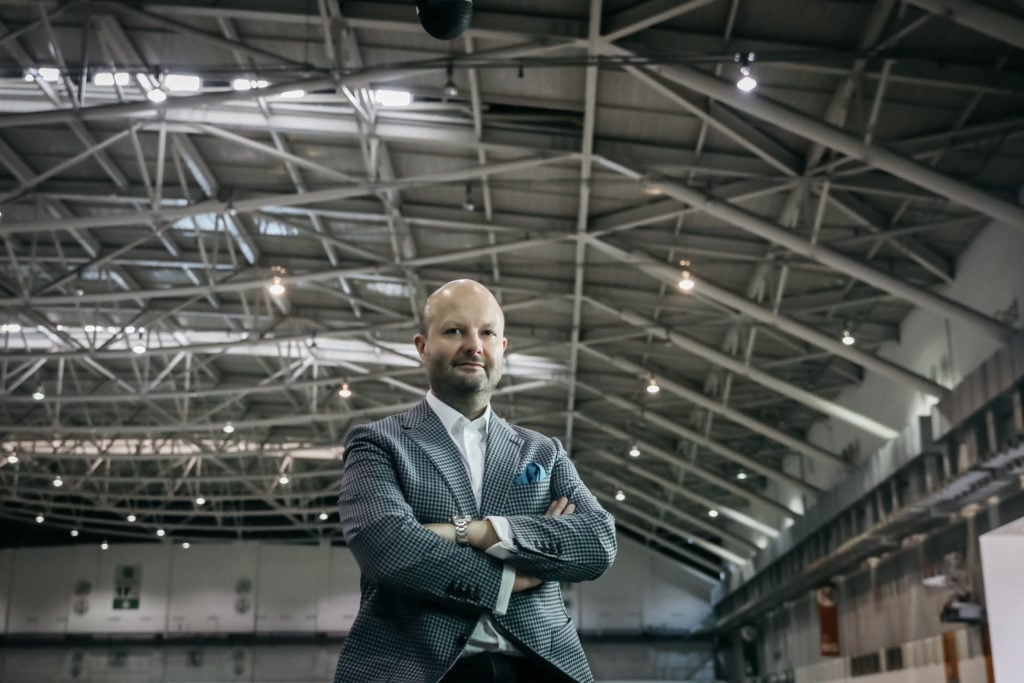
The Hong Kong art-market impresario spoke to Andrew Goldstein about his vision for his new art fair in Taiwan's capital.

Andrew Goldstein

When it comes to expansion of the Western contemporary art market in the Far East, few have been as intricately involved as the British-born, Hong Kong-based Magnus Renfrew. Fantastically connected with the region’s key players, he has been an eminence there ever since establishing Art Hong Kong in 2008, thereby setting in motion the current developmental boom that sees a new global behemoth opening an office in China practically every month.
Now, eight years after selling the majority stake in that fair to Art Basel, Renfrew is launching a new fair that is more modest in scope but possibly more ambitious in vision, this time in Taipei. Called Taipei Dangdai (which translates as “The Present Moment”), the 90-exhibitor fair features an impressive number of blue-chip Western galleries, including Sprüth Magers and Gagosian. But it is ultimately intended to encourage Asian collectors to turn their eyes—and pocketbooks—to the cutting-edge art of their immediate neighbors in the Pacific.
Three years in the making, Renfrew’s new fair has a multiyear sponsorship agreement with UBS—the same sponsor as Art Basel—and coincides with the Taipei Biennial. To better understand the vision he and his passionate team have for Taipei Dangdai, artnet News’s Andrew Goldstein spoke to the founder about how the art market is evolving in the region and why his relatively short-lived stint as Bonhams’s deputy chairman in Asia convinced him that Taiwan was the place to be.
You launched your last fair in Hong Kong, Asia’s great mercantile metropolis, and it has evolved into a major event in the international art calendar. What convinced you that there was room for another high-profile fair in the region?
Right now Art Basel in Hong Kong has really asserted itself as the global art fair for Asia, and it does a very good job of that. But elsewhere in Asia—with the exception of Shanghai, which has two very good art fairs—the fairs are a little bit behind where the market suggests they should be. Sometimes that’s because they have been organized by local gallery associations, which are subject to pressure to welcome all applications, rather than adhering to international standards of quality. So, I think that there are opportunities in different parts of Asia to provide higher-quality fairs that have a regional focus.
This is especially true because right now we’re seeing an influx of major international galleries into Hong Kong, and the logical next stage is for these galleries to develop more meaningful relationships beyond Hong Kong. Because while Hong Kong is a very natural launching point for Asia, Asia is a very big place with important markets that all deserve high-quality offerings.
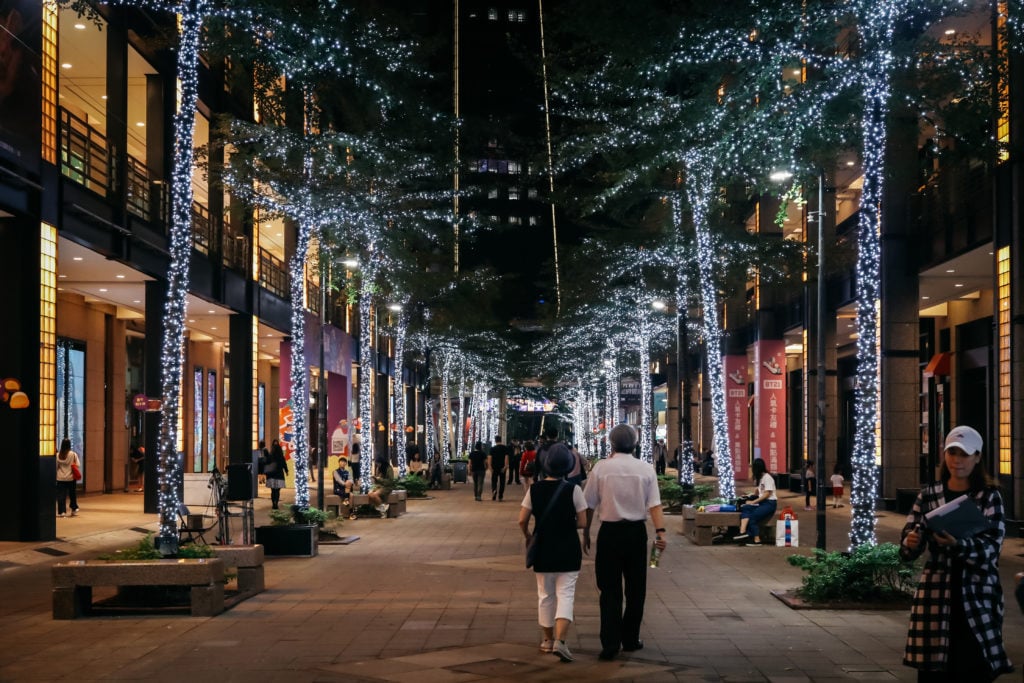
Taipei city scene, 2018. Courtesy Taipei Dangdai
What makes Taipei the logical location for this kind of regional fair?
When you’re looking at launching an art fair, you have to think of the natural catchment area. Taiwan has a very strong domestic collector base that’s been internationally engaged for many years. And there are different segments to the market. There are collectors who have only bought from auctions before, and collectors who have only bought traditional art and antiquities before, but there are also collectors who have bought Impressionist and Modern art. It’s very interesting that Sotheby’s and Christie’s, for example, always tour the highlights of their spring and autumn Impressionist and Modern and postwar sales in Taipei.
Also, when I was working for Art Hong Kong and then for Art Basel, I traveled to Taiwan and to Taipei a lot, primarily because it was widely recognized that the Taiwanese collectors were incredibly important for the success of the international galleries’ participation in Hong Kong. But what was also interesting for me is that, when I left Art Basel and went to work for the Bonhams auction house for a period, I found myself spending a lot of time in Taiwan, because it was one of our key consignment-getting markets. At the same time, I was coming across collectors who I’ve never come across through art fairs.
Very early on with Art Hong Kong, we saw that collectors who had exclusively bought at auction before widened their horizons to collect through other channels, buying from galleries and buying from art fairs. But having that stringent selection process is really the key thing, because it’s incredibly important for generating a sense of confidence, especially in a place that historically hasn’t had these kinds of structures.
Your selection committee features an international range of perspectives, including Sprüth Magers’s Patricia Crockett, Taka Ishii’s Elisa Uematsu, and the dealer Edouard Malingue. But while they brought on several galleries that may be discoveries for some collectors, the most notable thing about the exhibitor list is the presence of global heavy hitters like Gagosian, Pace, Hauser & Wirth, and Lisson. Those kinds of famous brands might go a long way toward generating confidence.
We have a really great lineup for a first-year fair. But more than that, I’m thrilled with the quality of the works that the galleries are bringing. I mean, you can have two completely different outcomes with the same exhibitor lineup. Kukje, for instance, has been doing Art Basel in Switzerland for 20 years, and this will be the first time that they’ve ever done a solo presentation, of [the South Korean sculptor] Haegue Yang. Simon Lee is also doing a solo presentation of [conceptual artist] Mel Bochner. Then there’s Hauser & Wirth, and they’re doing a solo presentation of work by [the late German painter] Günther Förg.
Many of the galleries have very established contacts here already, and they really want to impress them—there’s already a healthy dynamic of internal competition between the exhibitors at the fair. For a first-year fair, that’s really exciting.
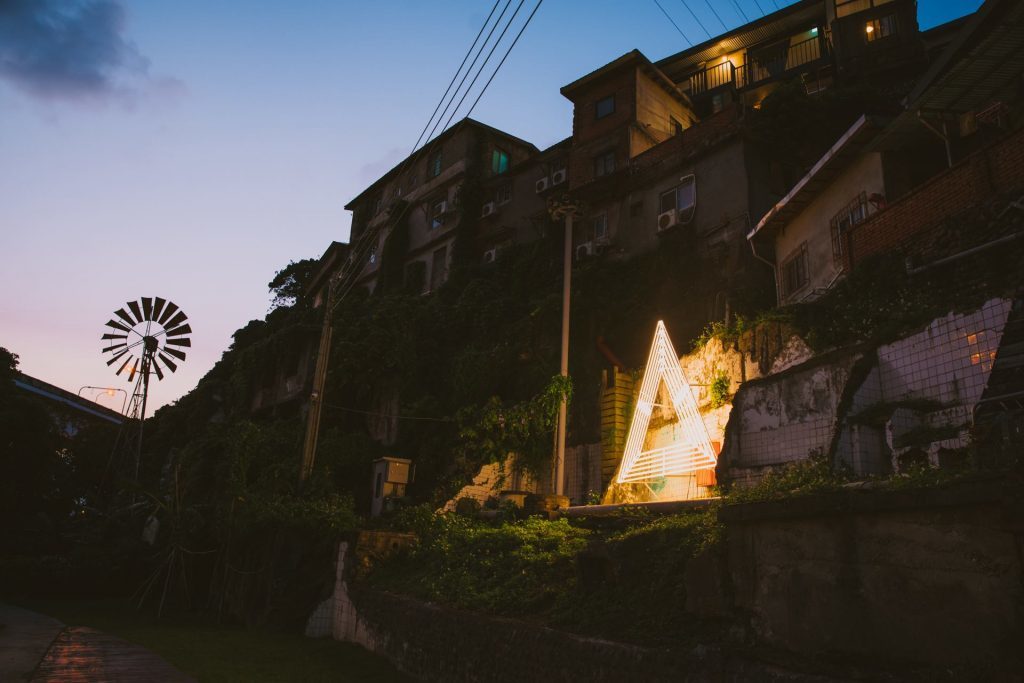
Liu Chihhung’s Delta (2018). © 2018 Treasure Hill Artist Village,Taipei Artist Village. Courtesy of artist and nca|nichido contemporary art.
Even as you have brought on these blue-chip Western galleries, you have also made it a point of emphasis for Taipei Dangdai to be a regional fair, not an international fair. Can you explain what that means?
We had very strong interest from galleries in this fair—we had 160 applications—but we decided to keep it as closely controlled as possible, and to focus on those galleries that have made a strong commitment to the region. So while we have 20 Western galleries participating, 10 of those have spaces in Asia, and a further five have full-time on-the-ground representatives in Asia. That means 85 percent of the Western galleries in the fair are highly invested in building the market here for the long term.
So, yes, we’ve got the very best galleries in the world participating from the West, but we don’t want to create another Art Basel here. We want it to be a place where people can discover art from the region, and that is reflective of the local culture and background.
In the not-too-distant future, collectors from Asia will have built up their confidence in contemporary art and will start collecting more art from Asia as well. That’s our aspiration—we really want to showcase the diversity. Look at any art fair in Europe and America, and the vast majority of the galleries are from Europe and America, and that seems to leave very little conceptual room for art from different cultures and aesthetic backgrounds. Collectors don’t want to see the same things that one would see in Paris or London or New York. People are hungry to discover something new.

Courtesy of Art Basel Hong Kong.
It’s no secret that the world’s biggest galleries have been making serious investments in China, opening Asian flagship galleries in Hong Kong and starting operations on the mainland as well. Can you give me a little bit more perspective on why they would be so keen on bringing their operations to Taiwan? You mentioned the high number of consignments the auction houses get from the country’s collectors—is there any more hard data you could point to that illustrates Taiwan’s art-market potential?
Last year, Phillips said that around 30 percent of the house’s Hong Kong contemporary sales were going to Taiwan. Sotheby’s and Christie’s likewise cite Taiwanese collectors as among the most important to them. It’s also one of the largest wealth-management markets in the world for UBS, our sponsor. You can see the statistics online. [In a tally of the world’s individuals with $50 million or more in net assets, Taiwan ranked 15th in 2017, with 2,010 in the country; it also had the third-highest growth rate among these ultra-high-net-worth individuals, after Brazil and Russia.] While some of these people are already incredibly active in the contemporary art market, we’ve only just started to scratch the surface.
Taiwanese collectors are famous for having been quicker on the draw than their mainland counterparts to buy up important Chinese art, and some of the greatest holdings of Chinese Modern masterworks by artist like Zao Wou-Ki are in Taiwan. How would you characterize the general mode of Taiwanese collectors? What makes them so savvy?
There’s a seriousness and sincerity to their collecting that comes from a place of intellectual engagement and true passion for the art. Yes, speculation comes into play in all parts of the world, but arts and culture is also just part of their lives. I’ve been visiting a lot of museums in Taipei, and you often see school groups of quite young children. It’s just a societal norm.
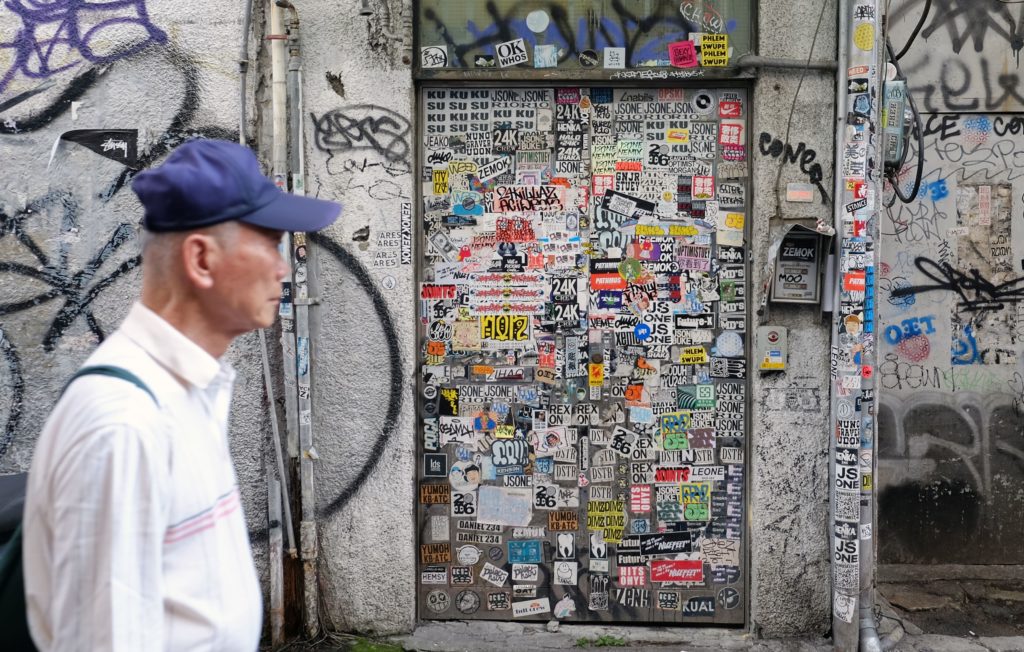
A visitor to Taipei’s Ximen district. Photo: Sam Yeh/AFP/Getty Images.
To raise a nuts-and-bolts issue, taxation is often a key consideration when locating an art fair in a developing region. Hong Kong is famously tax-free, and while Shanghai is on the mainland, it still has these pockets with freeport status that its fairs can take advantage of. How does the tax situation play out in Taipei when it comes to art sales?
It’s complicated but, in the end, not too onerous. There are several different types of taxes that are applied on art transactions. On most artwork, the import tax is zero. But it’s not necessarily a tax system that was designed for art, so the material that an artwork is made of can affect the tax in various ways—a metal sculpture is taxed more than a painting, for instance—but it’s rarely more than 10 percent, and usually it’s nothing. The sales tax is five percent, so that’s very clear. There’s a .04 percent promotions tax. Then there’s a 20 percent profit tax, which is the difference between the declared value of the object when it’s imported and the final sale price.
At the same time, we are working with an official shipper that is also handling the importation of artworks and is able to handle all of those tax obligations for the galleries and make it simpler for them. What I would say, too, is that art fairs are more and more becoming touch points on the international calendar to maintain relationships with people. And while transactions do happen at fairs, transactions also happen in the weeks and months following fairs. There may well be the situation where sales might begin in Taiwan and finish in Hong Kong.
Everyone knows there is sensitivity regarding Taiwan’s status relative to China, but few people in the West understand exactly how these sensitivities manifest on a day-to-day basis. How does the political situation impact your thinking about your fair?
For one thing, I think the art world is more focused on cities than it is on ideas of nations, really—it’s more concerned with the possibility of cities as nexuses for commerce and the accelerated exchange of ideas. But it’s a well-known and well-recognized reality that the political status of Taiwan has been contested for the past 70 years, and that is a reality that people across all aspects of the political spectrum have to navigate.
Considering the growing importance of catering to Chinese collectors, what are the benefits of having a fair in Taipei in terms of reaching them, and what are the drawbacks?
If Chinese collectors are your main focus, then Shanghai is the obvious place to go. At the same time, I think Chinese collectors very much enjoy coming to Taiwan, and very much enjoy—like many others—the food, the people, the culture. The fact that they have the opportunity to see things like the Palace Museum is also a great draw.
We’ve got collectors coming from mainland China, but we also expect strong attendance from Japan as well. Japan and Taiwan have a shared history, in terms of the Japanese colonial rule here. So we have museum groups coming from the Mori Art Museum in Tokyo, but also from the Tate [in London], and we’ve got curators coming from the Pompidou [in Paris] and someone coming from MoMA [in New York].
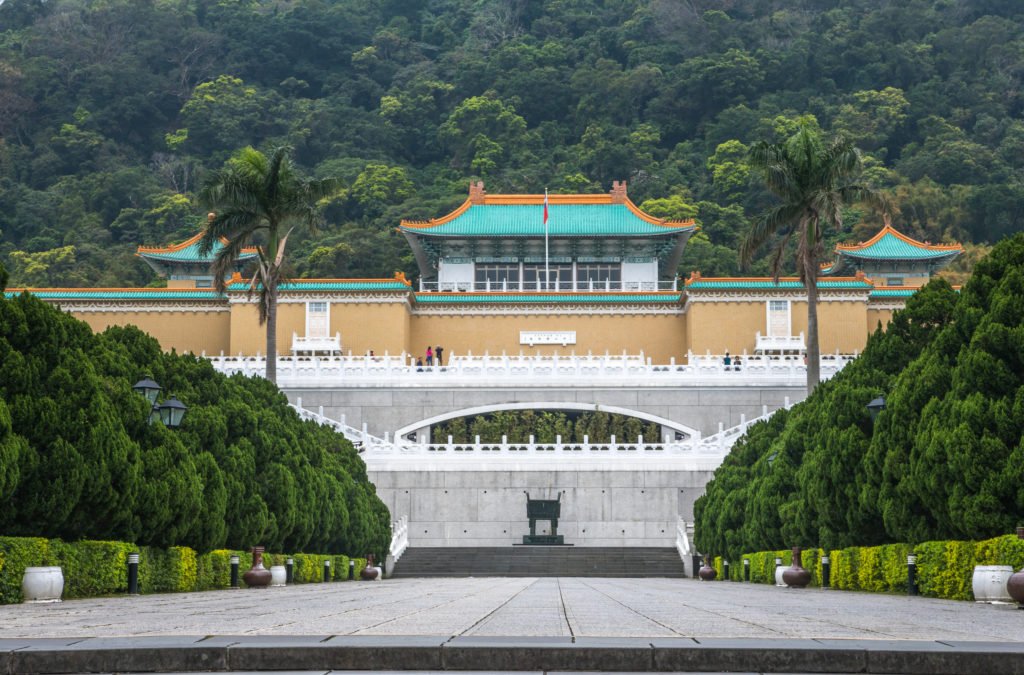
Taiwan, Taipei City, National Palace Museum. (Photo by: Prisma by Dukas/UIG/ Getty Images)
Another geopolitical consideration that threatens to cast a shadow over the fair’s debut, of course, is the trade war between China and the US. How is that being felt on the ground in Taipei, if at all, and what impact do you think that could have on your first edition?
In some respects, the trade war between China and the US is creating an increased relevance for Taiwan. When it comes to manufacturing and so on, things are sometimes now being assembled and finalized here so that they’re imported from Taiwan rather than from elsewhere in China. But I think that the overall economic climate worldwide is not something that Taiwan and Taipei are by any means immune from. Those wider concerns are global concerns.
Do you think that it could potentially dampen sales during this first edition?
I’m most interested in the fair’s medium- and long-term prospects. We want to create something that’s going to be meaningful for the long run. I’ve been through difficult economic climates before as an art-fair organizer. You may remember that, in 2008, Lehman Brothers was our lead sponsor at Art Hong Kong. In 2009, they were not. So that gives you an indication of things.
Considering the explosion of the art scene in Hong Kong after you started your fair there, how do you envision the art scene in Taipei evolving over this medium and long term?
I can foresee a situation in which, a few years down the line, there’ll be a number of galleries from elsewhere in Asia and also from Europe and the United States [with operations in Taipei]. Already you have galleries from Japan that have spaces here, like NCA [Nichido Contemporary Art] and Whitestone, which are doing quite well in the city. And while I don’t think the decision was driven by the existence of Taipei Dangdai, I think their shared vision for the possibilities of Taipei led Sean Kelly to open their Asia outpost in Taipei, which they’re doing this week. Maybe having low overhead here might mean that there’s a possibility for galleries that are more programmatically focused to take root in Taipei, rather than just the top-level blue-chip galleries.

Taipei Nangang Exhibition Center.
You mentioned before that you envision a situation where a sale is begun in Taipei Dangdai and then completed in Hong Kong. How do you see your new fair relating to Art Basel Hong Kong?
It’s really about trying to unlock the natural potential for any city. I think that what we’re doing is really going to help Art Basel Hong Kong, because what’s necessary now is to provide the opportunity for people to build up the collector base in Asia. That’s going to be good for everyone. There’s a phrase that I like: “Chase the dream and not the competition.” That’s what we’re about. We want to expand the pie.